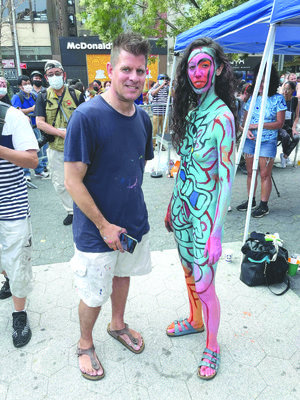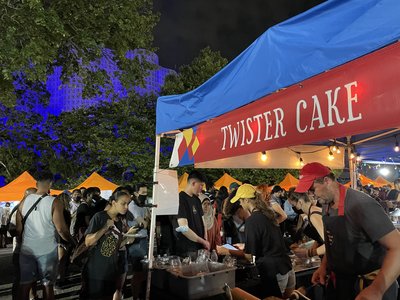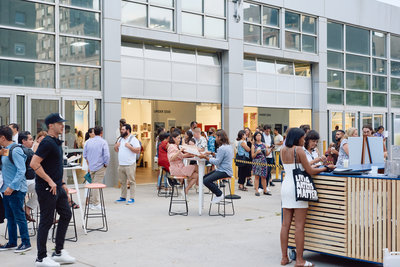Two arrests in attack of firefighter in Middle Village
Two teenagers who were part of a crowd who attacked a 44-year-old man who was walking his dog near Juniper Valley Park in Middle Village have been arrested.
The names of the 14-year-old and 15-year-old suspects are being withheld by police because of their age. Both have been charged with gang assault.
The assault took place on Friday at 10 p.m., when the victim confronted a group of people lighting fireworks, yelling and screaming. A verbal dispute escalated into a physical encounter.
A video captured by a bystander that was posted to the Juniper Park Civic Association’s Facebook page documented the moments leading up to the assault. The victim can be seen backpedaling away from the crowd as members of the group take away his dog and press closer.
Seconds later, the off-duty firefighter was tackled to the ground and driven into the concrete by an assailant who managed to wrap his arms around both of the victim’s legs.
What appears to be a group of about ten men in their early 20s descend on the victim, who is physically overwhelmed by the crowd and unable to escape, unleashing a series of kicks and punches.
The victim sustained cuts and bruising, but refused medical attention.
“Last night, things spun completely out of control,” said Republican mayoral candidate Curtis Sliwa. “You had upwards of 200 young adults rampaging through the park at different intervals, and then descended on a man walking his dog.
“Thugs and ‘thugettes’ know there are no consequences for their actions because almost nobody gets arrested any longer in this city,” continued Sliwa. “We’re going to try to bring some civility to a park that was always known as a peaceful sanctuary for the people in Middle Village and Glendale.”
While acts of violence are unusual, fireworks and late-night parties are not, said Paul Howells, a Middle Village resident who is fed up with the excessive use of fireworks throughout the summer in the park. “These people come around in cars, set them off and just leave all the trash there.”
Matthew Wenz, an 18-year-old student who will be attending Adelphi University in the fall and lives near the park, could not believe that kids from his neighborhood would attack a civil servant.
“It’s disgusting,” he said “It’s a horrible attack that shouldn’t happen anywhere, never mind this neighborhood.”
Councilman Bob Holden was quick to react following the attack and condemned the crowd’s behavior. Before being elected to the City Council, Holden was the longtime president of the Juniper Park Civic Association.
Holden met with the 104th Precinct’s commanding officer and representatives from the Parks Department to demand immediate action to keep the park safe.
“Quality-of-life crimes, like unreasonable noise, lead to more serious crime and it must be shut down so that our parks are peaceful and safe,” Holden said. “Deputy Inspector [Louron] Hall assured me that enforcement will be stepped up with added measures taken so that there will be no more incidents like the one at Juniper Valley Park.”







